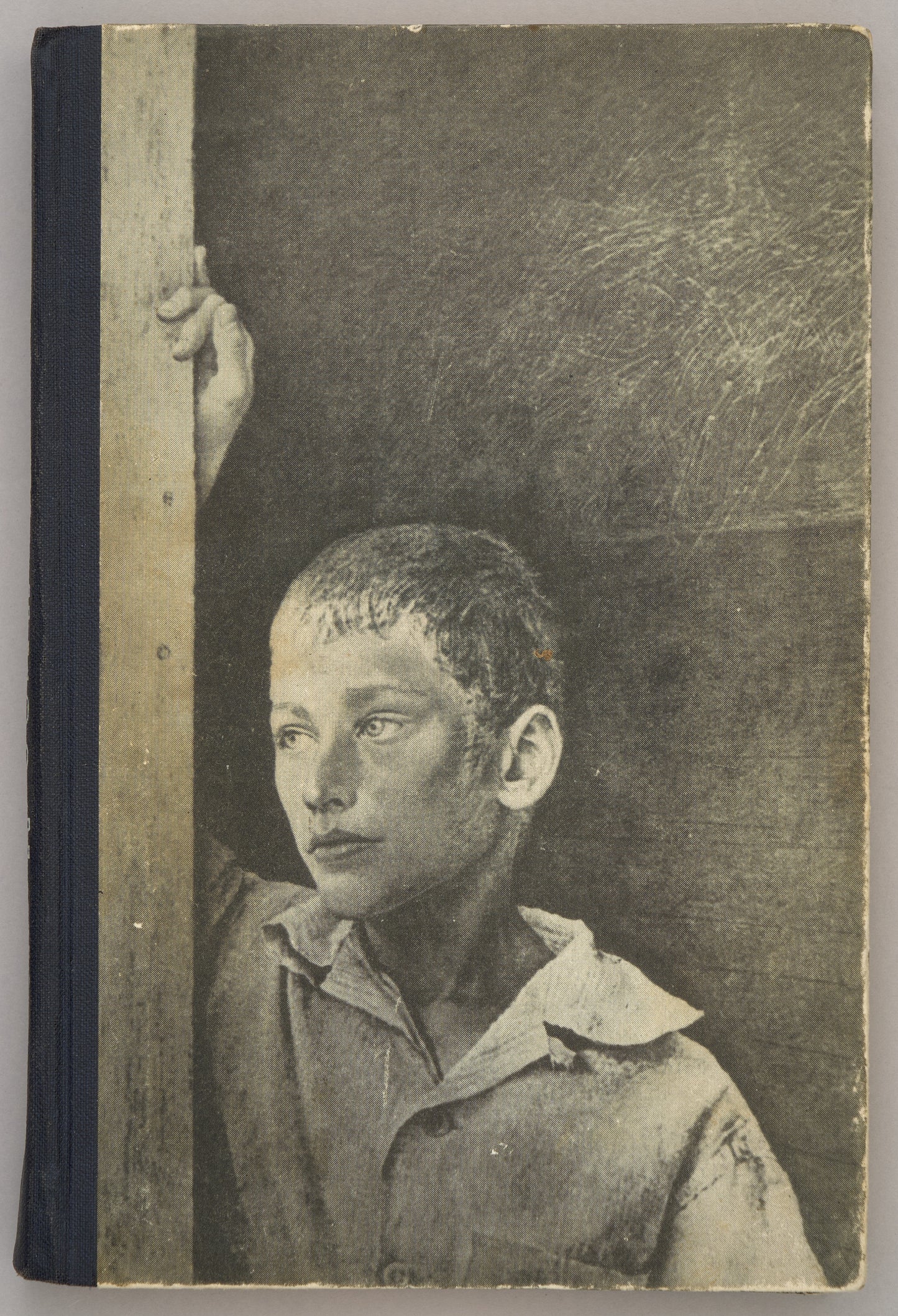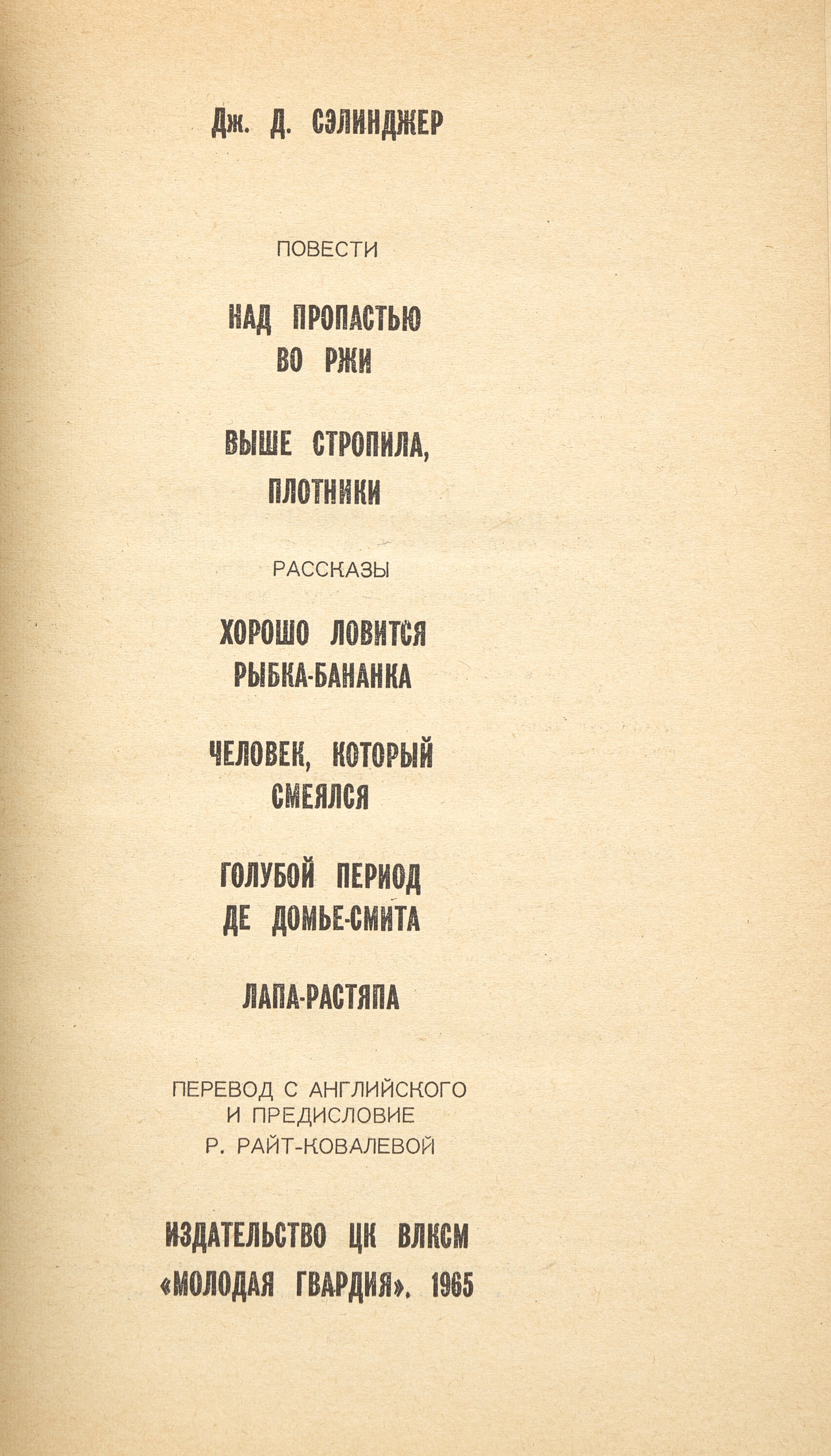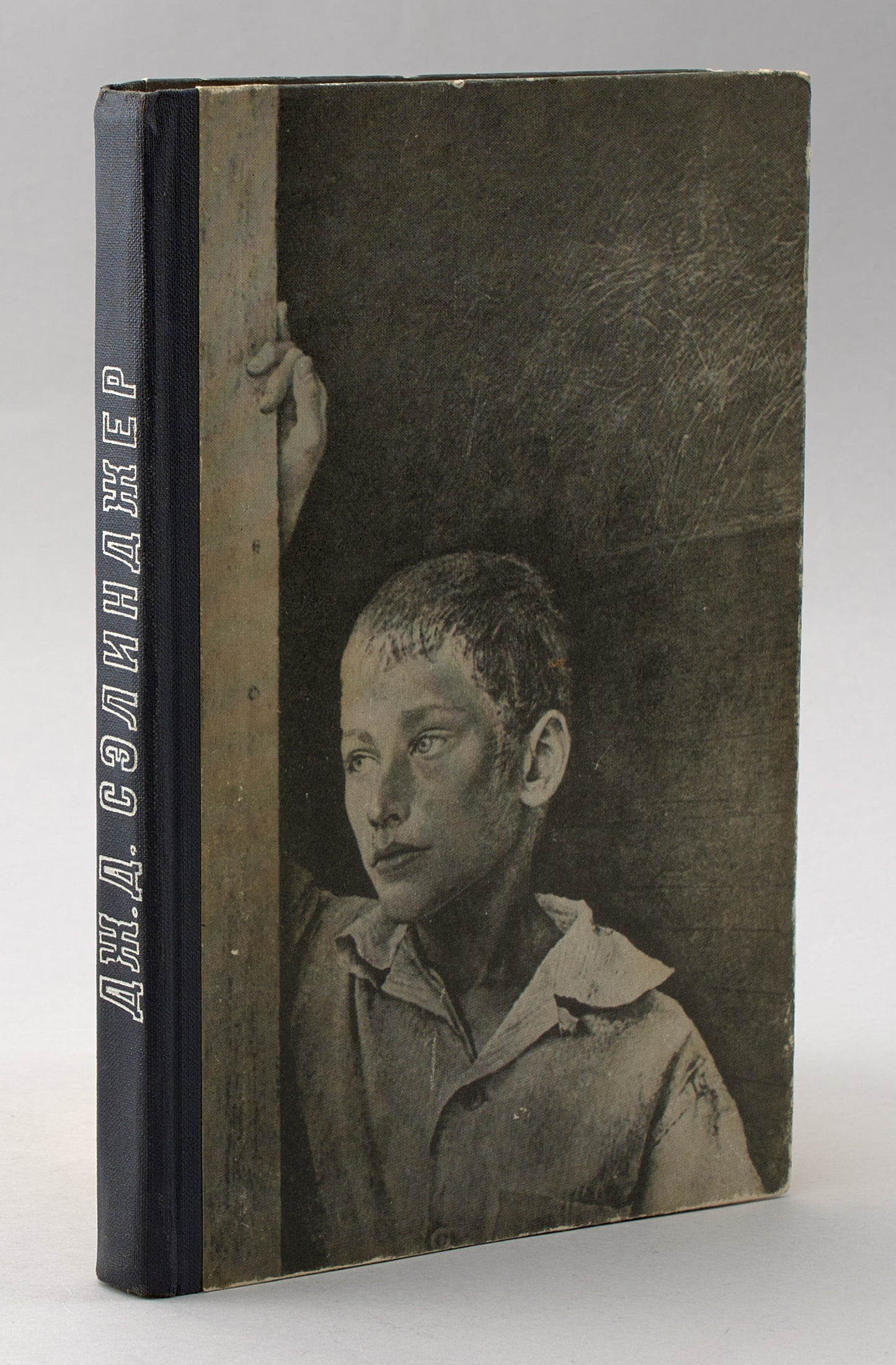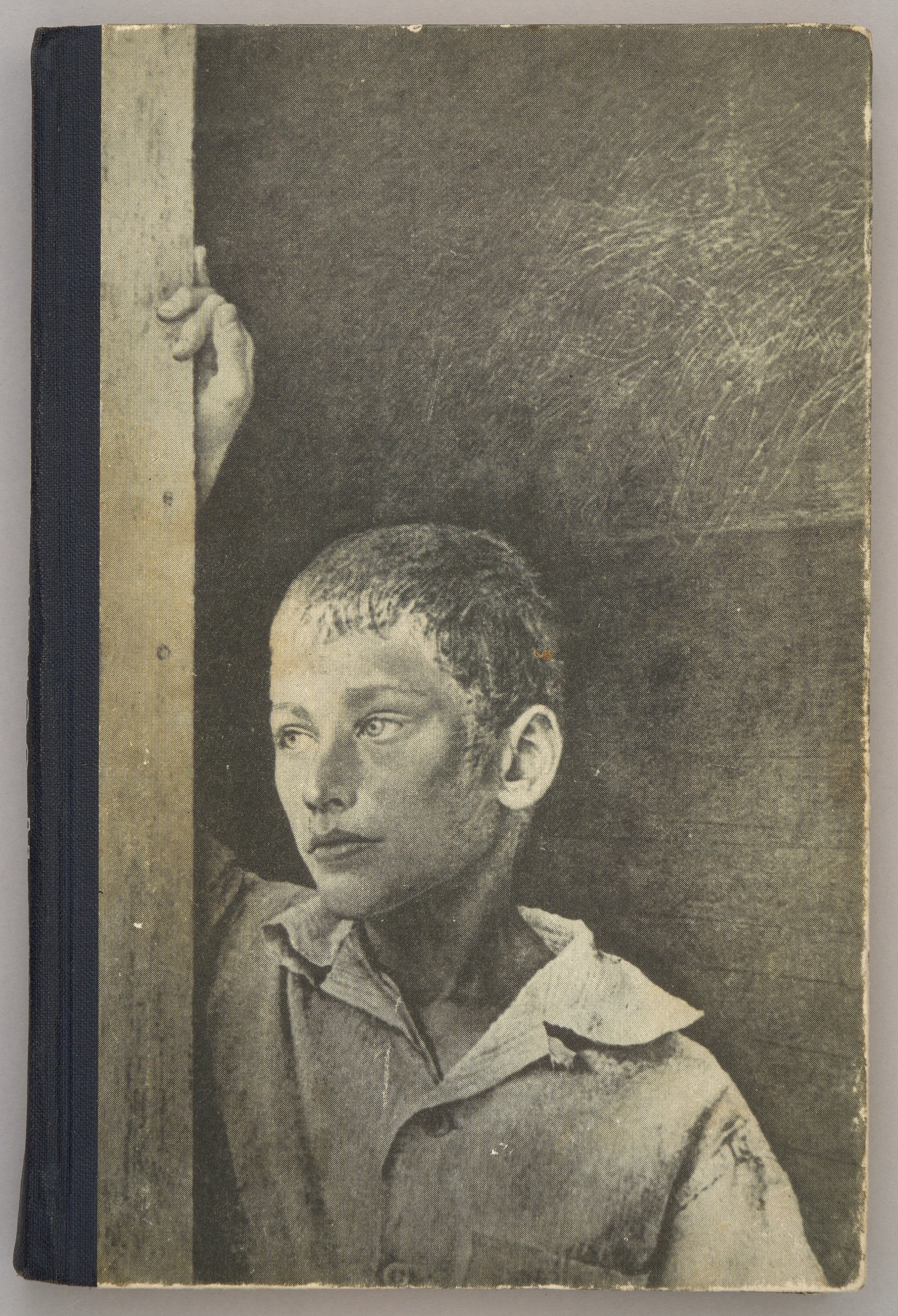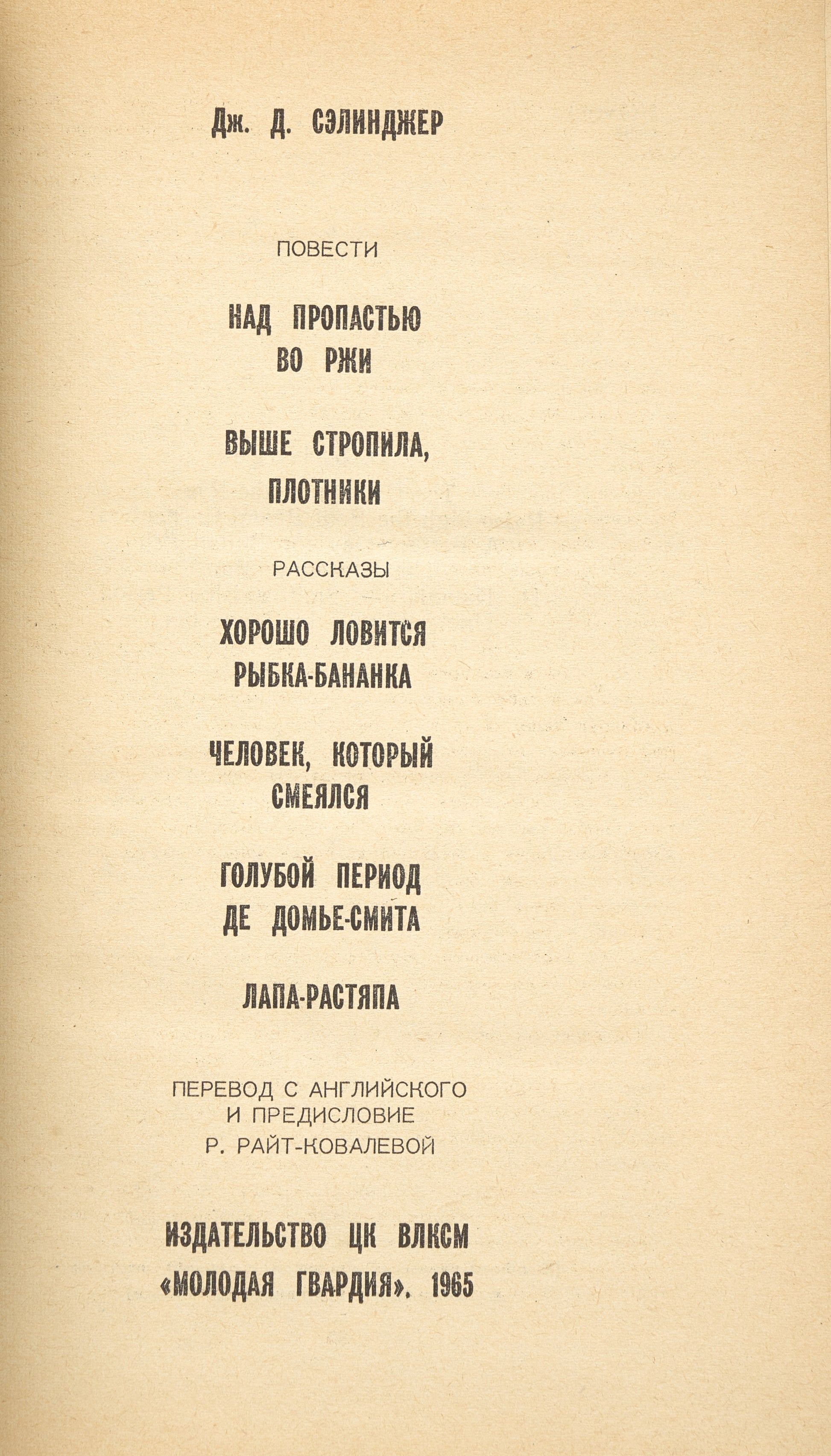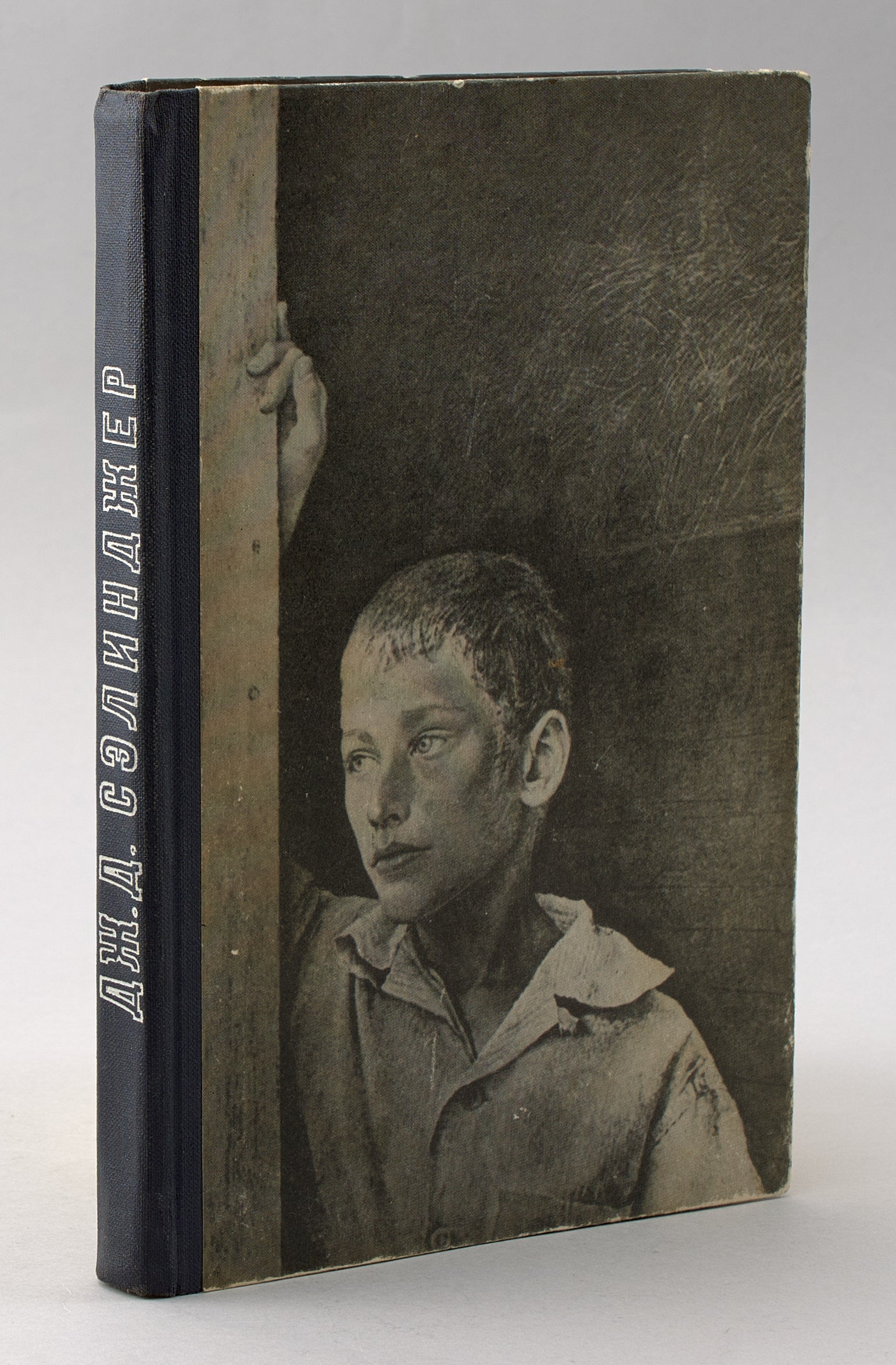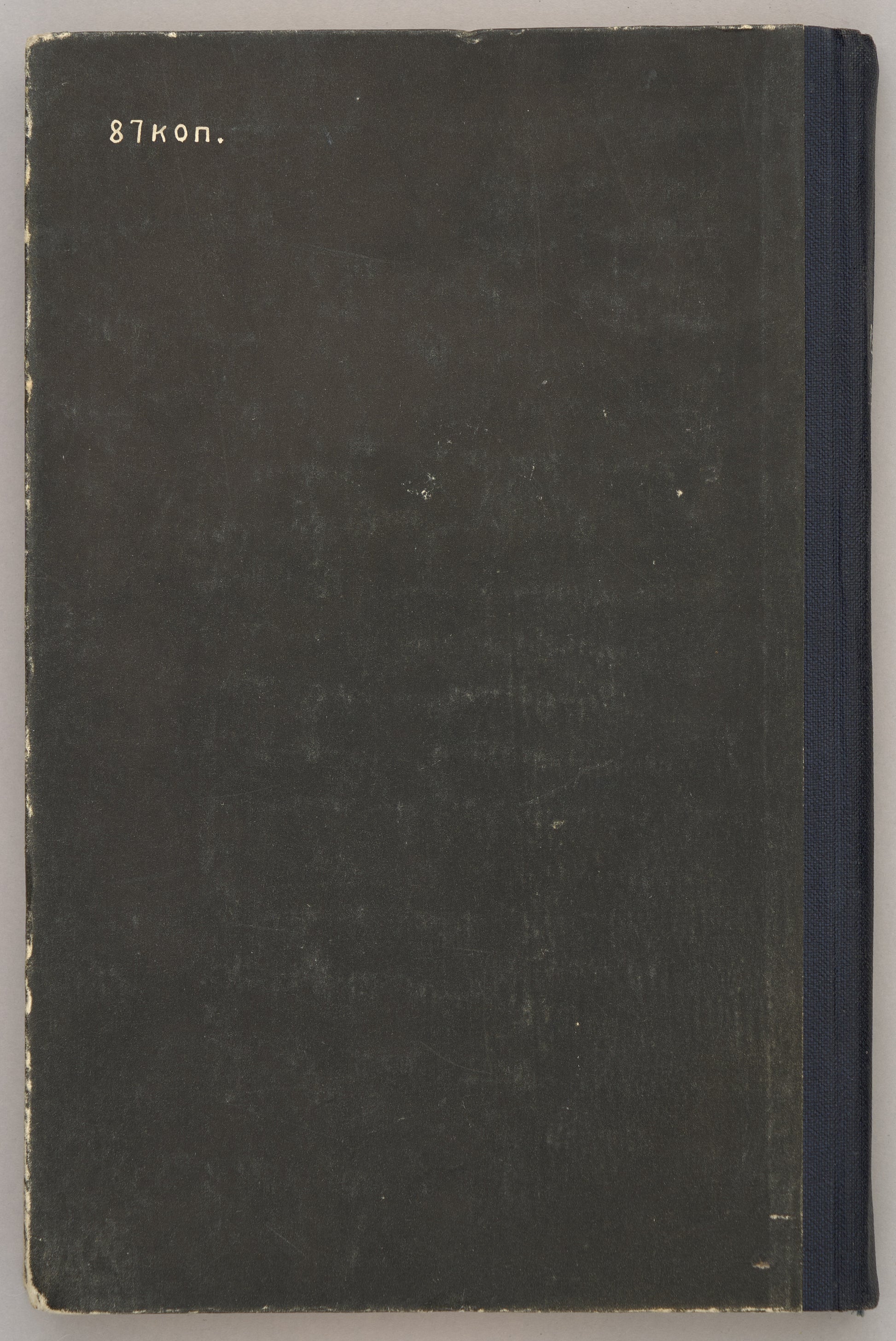Salinger, J.D.
Novels. First book edition of "The Catcher in the Rye" in Russian.
Novels. First book edition of "The Catcher in the Rye" in Russian.
Couldn't load pickup availability
Salinger, J.D. [Novels]. Povesti.
Translation and preface by R. Rait-Kovaleva.
Book design by B. Zhutovskii (and Andrew Wyeth).
[Moskva], Izdatel’stvo TSK VLKSM “Molodaia gvardiia”, 1965.
8vo, 253, [3] pp., portrait.
In publisher’s pictorial hardcover.
In good condition, lightly wear to edges, owner’s mark to front free endpaper ('Esli by v sovetskom soiuze / i ne prochitali etoi kni- / zhitcy - bedy bolshoi ne / bylo by. / T. Stepanov / polza ot etoi knizhe- / tcy tolko odnomu cheloveku / - perepodchiku. / T.S. / 27 dekabria 1965 g.'. [If they hadn't read this little book in the Soviet Union - there wouldn't have been a great disaster. T. Stepanov. The benefit from this little book is only for one person - the translator. T.S. December 27, 1965]).
First book edition of 'The Catcher in the Rye' in Russian.
This book contains two novels and four stories by J.D. Salinger (1919-2010): 'The Catcher in the Rye', 'Raise High the Roof Beam, Carpenters', 'A Perfect Day for Bananafish', 'The Laughing Man', 'De Daumier-Smith’s Blue Period', 'Uncle Wiggily in Connecticut'.
The Russian translation of 'The Catcher in the Rye' first appeared in serial form in the 'Inostrannaya Literatura' magazine in 1960 (No 11). Unfortunately, the censor rejected R. Rait-Kovaleva’s attempt to include Holden's language in her translation. That's why Rait-Kovaleva made her translation have a more 'literary' tone. It remained the only authorized translation for the duration of the Soviet period.
Rita Rait-Kovaleva (1898-1989), a prominent translator and a member of Kashkin’s school of translation, was best known for her translations of J.D. Salinger and Kurt Vonnegut. Her translation of 'The Catcher in the Rye' was one of the major events during the Khrushchev Thaw and became a staple in the library of virtually every Soviet intellectual. Despite the censorship problems, the translator managed to create a unique novel that might have diverged considerably from the original text, yet it left a lasting impact on that Soviet generation of young people and was imbued with a distinct 'feminine' quality.
The book cover is illustrated with 'Albert's Son' (1959) by Andrew Wyeth, which has been held in the National Museum of Art in Oslo since 1960. It is highly likely that Wyeth was unaware that his painting was used for the first Russian edition of 'The Catcher in the Rye'.
Moreover, the impolite comment on the front free endpaper was most likely left by Trofim Stepanov, who was the head of the Peredelkino Writers' Village but held a very high opinion of himself, as is evident.
Libman. #5504.
